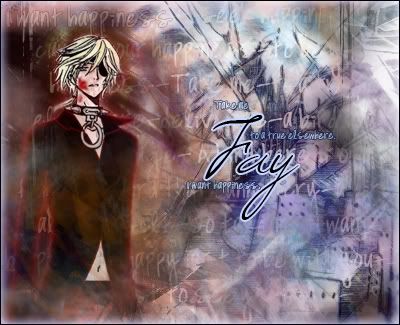From
DreamSmith Graphics
Vlad Dracul was the father of Vlad the Impaler (1430-1477), the person who has been identifed as the historical Dracula. He was the illegitimate son of Prince Mircea, the ruler of Wallachia, that area of present-day Romania south of teh Carpathian Mountains. His mother migh have been Princess Mara of the Tomaj family of Hungary. He possibly spent a period of his youth at the court of Sigismund I of Luxembourg, the King of Hungary, as a token of faithfulness of Mircea's alliance with Sigismund. Thus, Vlad might have grown up in Buda and in locations in Germany. He married and had a son, also named Mircea.
In 1430 Vlad appeared in Transylvania as an official in charge of securing the Transylvanian border with Wallichia. He resided in Sighisoara, where toward the end of the year his second son, Vlad (later called Vlad the Impaler), was born. Shortly after the child's birth, it became known that Sigismund had select Vlad as his candidate to rule Wallachia. Vlad was invited to Nüremberg to be invested by the Order of the Dragon. (Sigismund had founded the order in 1418), which had a variety of goals, among them to fight Islam.
Now bearing the title of prince of Wallachia, he was unable to secure the throne. He eventually created a powerful alliance by marrying Eupraxia, the sister of the ruler of Moldavia, as a second wife. In 1436 he was finally able to secure the Wallachian throne, and in the winter of 1436-37 he moved to Tirgoviste, the Wallachian capital. He had three other children: Radu, a second son also named Vlad (commonly refered to as Vlad the Monk), and a second son named Mircea.
In 1437, following the death of Sigismund, Vlad Dracul signed an alliance with the Turks. In March 1442 he allowed Mezid-Bey to pass through Wallachia and attack Transylvania. However, the Turkish army was defeated and the Hungarian army pursued Mezid-Bey back through Wallachia and drove Vlad Dracul from the throne in the process. He took refuge among the Turks,, with whose help he regained the throne the following year. To secure the new relationship, Vlad Dracul left two sons, Vlad and Radu, in Turkish hands. Then, in 1444, Hungary moved against the Turks. Vlad Dracul, attempting to keep his pledge to the sultan but also aware of his obligations to the Christian community, sent a small contigent to assist the Hungarian forces. They met with a resounding defeat, which Vlad Dracul and his son Mircea blamed on John Hunyadi, the governor of Hungary. In 1447 Hunyadi led a war against Vlad. The decisive battle was fought near Tirgoviste, and as a result Vlad was killed and Mircea captured by the Romanian boyars (the ruling elite) and tortured and killed.
The year after Vlad Dracul's death, his son Vlad Dracula ("son of Dracul") attempted to assume his throne. He was unable to do so until 1456. Soon after becoming prince of Wallachia, he avenged the death of his father and brother.
Vlad The Impaler (1431?-1476)
Vlad the Impaler was a historical figure upon whom Bram Stoker partially built the title character of his novel Dracula.
The name Dracula was applied to Vlad during his lifetime. It was derived from drac, a Romanian word that can be interpreted variously as "devil" or "dragon." Vlad's father had joined the Order of the Dragon, a Christian brotherhood dedicated to fighting the Turks, in 1431, shortly after Vlad's birth. The oath of the order require, among other things, wearing the order's insignia at all times. The name Dracula means son of Dracul or son of the dragon or devil.
The actual birth date of Vlad, later called Vlad the Impaler, is unknown, but was probably late in 1430. He was born in Schassburg (aka Sighisoara), a town in Transylvania. Soon after his birth, his father was invested with the insignia of the Order of Dragon.
In 1451, while he was at Suceava, the Moldavian capital, the ruler was assassinated. For whatever reasons, Vlad then went to Transylvania and placed himself at the mercy of Hunyadi, the very person who had ordered his father's assassination.
Hunyadi died of the plague at Belgrade on August 11, 1456. Immediately after that event, Vlad left Transylvania for Wallachia. He defeated Vladislave II and on August 20 caught up with the fleeing prince and killed him. Vlad then began his six-year reign, during which his reputation was established. In September he took both a formal oath to Hungarian King Ladislaus V and, a few days later, an oath of vassalage to the Turkish sultan.
Vlad committed his first major act of revenge. On Easter Sunday, after a day of feasting, he arrested the boyer families, whom he held responsible for the death of his father and brother.
Vlad's brutal manner of terrorizing his enemies and the seemingly arbitrary manner in which he had people punished earned him the nickname "Tepes" or "the Impaler," the common name by which he is known today. He not only used the stake against the boyers, whom he was trying to bring into subservience, he also terrorized the churches, both the Orthodox and the Roman Catholic, each of which had strength in his territory.
Vlad also used terrorist tactics against his foreign enemies. When he thought that merchants from Transylvania had ignored his trade laws, he led raids across the border in 1457 and again in 1459 and 1460 and used impalement to impose his will. During the latter incursion he looted the Church of Saint Bartholemew, burned a section of Brasov, and impaled numerous people. That raid was later pictured in anti-Dracula prints showing him dining among the impaled bodies.
During his reign, Vlad moved to the villiage of Bucharest and built it into an important fortified city with strong outter walls. Seeing the mountains as protective bulwarks, Vlad built his castle in the foothills of the Transylvania Alps. Later, feeling more secure and wishing to take control of the potentially wealthy plans to the south, he built up Bucharest.
At Castle Dracula he was faced with overwhelming odds, his army having melted away. He chose to survive by escaping through a secret tunnel and then over the Carpathians into Transylvania. His wife (or mistress), according to local legend, committed suicide before the Turks overran the castle. In Transylvania he presented himself to the new king of Hungary, Matthias Corvinus, who arrested him.
Vlad was imprisoned at the Hungarian captial at Visegrád, although it seems he lived under somewhat comfortable conditions after 1466. By 1475 events had shifted to the point that he emerged as the best candidate to retake the Wallachian throne. In the summer of 1475 he was again recognized as the prince of Wallachia. Soon thereafter he moved with an army to fight in Serbia, and upon his return he took up the battle against the Turks with the king of Moldavia. He was never secure on his throne. Many Wallachians allied themselves with the Turks against him. Hiis end came at the hand of an assassin at some point toward the end of December 1476 or early January 1477.
The actual location of Vlad's burial site is unknown, but a likely spot is the church at the Snagov monastery, an isolated rural monastery built on an island. Excavations there have proved inconclusive. A tomb near the altar thought by many to be Vlad's resting place was empty when opened in early 1930s. A second tomb near the door, however, contained a body richly garbed and buried with a crown.



























 )
)





Bookmarks